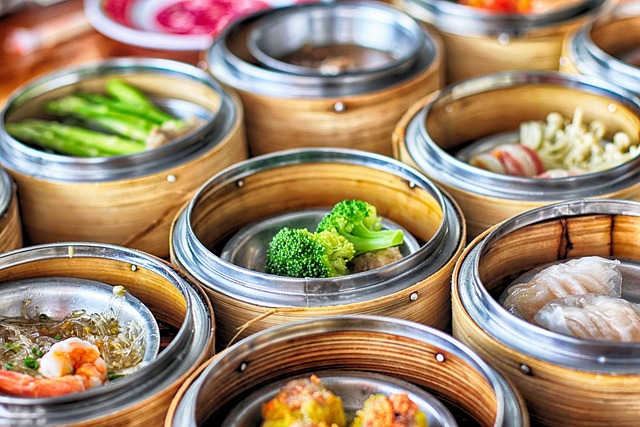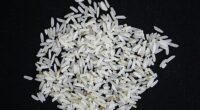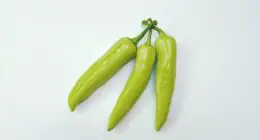Japanese food emphasizes fresh, raw ingredients, while Chinese cuisine offers diverse flavors with various cooking techniques and seasonings.
TL;DR Japanese food Vs. Chinese food
Japanese food is known for its emphasis on fresh ingredients and delicate presentation. The use of raw fish in sushi and sashimi is a hallmark of Japanese cuisine, as well as the artful preparation of dishes like tempura and teppanyaki. With its focus on simplicity, balance, and natural flavors, Japanese food offers a unique dining experience.
Chinese food boasts a wide array of styles and regional variations. From the spicy Sichuan dishes to the savory Cantonese dim sum, each region has its own specialties that reflect their local ingredients and cooking techniques. Chinese cuisine often incorporates bold flavors with staples such as rice or noodles.
Japanese cuisine

One iconic aspect of Japanese cuisine is sushi. This popular dish consists of bite-sized portions of vinegared rice topped with various toppings like raw fish (sashimi), cooked seafood, or vegetables. Sushi showcases the meticulous skill required for perfecting each roll or nigiri piece.
Another beloved culinary tradition in Japan is ramen. This hearty noodle soup has gained worldwide popularity for its rich broth and tender noodles. From creamy tonkotsu ramen to soy-based shoyu ramen, there’s a flavor profile to suit every palate.
Japanese cuisine also offers an array of delectable street foods such as takoyaki – savory octopus balls cooked in a special molded pan – and yakitori – skewered grilled chicken marinated in flavorful sauces. These bitesize delights make for satisfying snacks on the go!
And let’s not forget about tempura! This deep-fried treat features lightly battered seafood or vegetables that are fried until they become crispy perfection. The secret lies in the airy batter that creates a delightful contrast between the crunchy exterior and tender interior.
Japanese cuisine beautifully combines fresh ingredients with precise techniques to create dishes that please both the eyes and taste buds. So whether you’re indulging in sushi rolls or slurping up a steaming bowl of ramen, experiencing authentic Japanese food will transport you straight into the heart of this vibrant culinary culture
Chinese cuisine

Chinese cuisine is a culinary adventure that has been tantalizing taste buds for centuries. Bursting with bold flavors, vibrant colors, and diverse textures, Chinese food never fails to leave a lasting impression. Each region within China boasts its own unique dishes and cooking techniques, resulting in a rich tapestry of flavors.
One characteristic of Chinese cuisine is the emphasis on balance and harmony. The concept of yin and yang is reflected in the combination of ingredients chosen for each dish – contrasting flavors such as sweet and sour or spicy and mild are often used to create a harmonious blend. Additionally, Chinese cuisine incorporates a wide range of ingredients including meats like pork, chicken, beef; seafood like fish and shrimp; vegetables like bok choy and bamboo shoots; as well as various sauces, spices, and aromatic herbs.
Another distinguishing feature of Chinese cuisine is the importance placed on cooking methods. From stir-frying to steaming, braising to deep-frying, each technique imparts its own unique flavor profile onto the ingredients used. This versatility allows for an endless array of dishes that can be prepared using different combinations of these cooking methods.
Furthermore, regional variations play a significant role in defining Chinese cuisine. Cantonese cuisine from southern China tends to focus on lighter flavors with delicate sauces while Sichuan cuisine from western China is known for its fiery spiciness. Other notable regional cuisines include Shanghainese with its emphasis on seafood dishes or Beijing-style which features iconic dishes such as Peking duck.
Japanese food Vs. Chinese food – Key differences
| Aspect | Japanese Food | Chinese Food |
|---|---|---|
| Ingredients | Fresh, raw, and seasonal ingredients | Diverse, cooked with various ingredients and seasonings |
| Flavors | Subtle, natural, and delicate flavors | Bold, diverse, and often strongly seasoned |
| Cooking Methods | Sushi, sashimi, grilling, and steaming | Stir-frying, deep-frying, braising, and steaming |
| Presentation | Aesthetic presentation, often minimal | Artful plating and garnishing, diverse dishes |
| Rice | Central staple, often served with dishes | Main staple; various rice dishes and noodles |
| Noodles | Soba and udon noodles | A wide range, including lo mein and dim sum |
| Soups | Miso and clear broths | Rich, flavorful broths in dishes like hot pot |
| Sauces | Soy sauce, mirin, and dashi | Soy sauce, oyster sauce, hoisin, and more |
| Desserts | Light and subtle, often with red bean paste | Wide variety, including sweet buns and pastries |
| Beverages | Green tea, sake, and Japanese beer | Tea, rice wine, and various alcoholic beverages |
Popular Japanese cuisine
- Sushi: A renowned dish featuring vinegared rice with various toppings like raw fish (sashimi), vegetables, or cooked ingredients.
- Sashimi: Thinly sliced raw fish or seafood, often served with soy sauce and wasabi.
- Tempura: Deep-fried seafood or vegetables in a light, crispy batter.
- Ramen: Japanese noodle soup with various broths, noodles, and toppings like pork, egg, and seaweed.
- Udon: Thick wheat noodles served in a variety of broths with ingredients like tempura and tofu.
- Soba: Thin buckwheat noodles, typically served in a cold broth or as a hot noodle dish.
- Yakitori: Skewered and grilled chicken or other meats, often seasoned with a savory sauce.
- Tonkatsu: Breaded and deep-fried pork cutlet, usually served with cabbage and tonkatsu sauce.
- Okonomiyaki: A savory pancake made with a batter, cabbage, and a variety of toppings, customized to personal preference.
- Gyoza: Pan-fried dumplings filled with a mixture of ground meat and vegetables.
- Donburi: Rice bowls topped with ingredients like beef (gyudon), eel (unadon), or tempura (tendon).
- Yakiniku: Grilled meat, often at the table, with diners cooking their own slices of beef or pork.
- Chirashi-zushi: A bowl of vinegared rice topped with a colorful array of sashimi and ingredients.
- Miso Soup: A classic Japanese soup made with fermented soybean paste, tofu, seaweed, and other additions.
- Matcha: Green tea powder used for making traditional matcha tea and various matcha-flavored desserts.
Japanese cuisine is known for its fresh, high-quality ingredients, delicate flavors, and meticulous presentation. It offers a wide range of dishes, from simple street food to elaborate kaiseki multi-course meals.
Popular Chinese cuisine
- Kung Pao Chicken: A spicy Sichuan dish with chicken, peanuts, and vegetables in a flavorful sauce.
- Peking Duck: A famous Beijing dish featuring roast duck with thin, crispy skin, often served with pancakes and hoisin sauce.
- Sweet and Sour Pork: Crispy fried pork served in a tangy sweet and sour sauce.
- Dim Sum: A variety of bite-sized dishes, such as dumplings, buns, and rolls, often served at brunch.
- General Tso’s Chicken: A sweet and spicy dish with deep-fried chicken chunks and a rich sauce.
- Mapo Tofu: A Sichuan dish with tofu, minced meat, and a spicy, numbing sauce.
- Hot Pot: A communal cooking style where diners cook their own ingredients in a simmering pot of broth at the table.
- Chow Mein: Stir-fried noodles with vegetables and a choice of protein.
- Egg Fried Rice: Rice stir-fried with eggs, vegetables, and sometimes meat or seafood.
- Spring Rolls: Fried or fresh rolls filled with vegetables, shrimp, and pork, often served with dipping sauces.
- Ma Jiang Mian: Sesame paste noodles, a specialty in northern China.
- Sichuan Hot Pot: A fiery, spicy broth with a wide array of ingredients for cooking.
- Cantonese Dim Sum: A Cantonese tradition with a vast selection of savory and sweet bite-sized dishes.
- Dandan Noodles: A spicy and savory Sichuan noodle dish with minced meat and peanuts.
- Baozi: Steamed or baked buns filled with various ingredients, such as pork, vegetables, or sweet fillings.
- Congee: A rice porridge often served for breakfast, with various toppings and flavors.
Chinese cuisine is known for its diverse flavors, ingredients, and cooking techniques, influenced by the country’s vast geography and culinary traditions.
Image Credits
Featured Image By – Arek Socha from Pixabay
Image 1 By – Adamsov Production from Pixabay
Image 2 By – Mathieu Vivier from Pixabay








